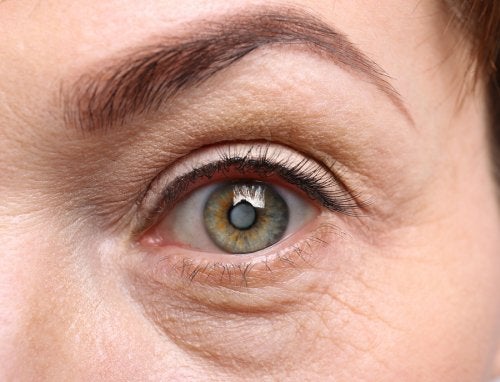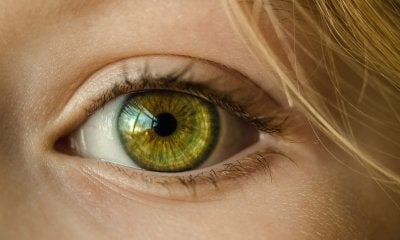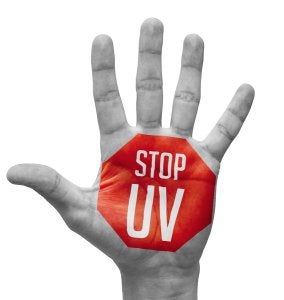-
Comparing Monofocal and Multifocal IOLs
Your options for cataract treatment in the Chicago area include monofocal and multifocal intraocular lenses (IOLs). During cataract surgery, the eye doctor removes the cloudy natural lens of the eye and replaces it with one of these types of intraocular implants. Most often, doctors implant monofocal IOLs. This type of lens is engineered to help patients focus at one distance—near, medium, or distance vision. Patients usually opt to have the lens provide clear distance vision. They will then use reading glasses for up-close work.
Multifocal lenses are more complex. This IOL features different zones, each with its own focusing power. In other words, multifocal lenses offer both near and distant focusing capabilities simultaneously. They work in a similar way as bifocal or multifocal contact lenses. Multifocal lenses are ideal for people who do a lot of reading or other close work, and who aren’t enamored of the idea of using reading glasses frequently.

-
Keeping Your Eyes Safe Around Fireworks
Summer is the season for dazzling displays of fireworks, and the Fourth of July tends to be the pinnacle. If you want to be safe and keep your eye doctor in Chicago happy while you enjoy the view, be sure to practice proper eye care . Look at this video clip for tips on keeping your eyes safe around fireworks.
There’s a lot to love about the summertime, from days at the beach to ice cream cones in the backyard. For many families, it’s tradition to go out and see a fireworks show on the Fourth of July. Fireworks can be beautiful, but they’re equally bright. If the light gets to be too much, consider putting on a pair of sunglasses. You can also try to distance yourself from the spectacle to avoid such intense exposure. Whether you prefer sparklers, bottle rockets, or firecrackers, practice proper eye care.
-
The Patient’s Guide to IOLs
If you’re having trouble with your vision, your eye doctor in Chicago might recommend the use of intraocular lenses , or IOLs. These intraocular implants can help patients deal with certain types of eye diseases, and in doing so they can improve their happiness and comfort. There are a few different kinds of IOLs, and you can discuss the different types with your ophthalmologist to find out which might be right for you. However, they are typically all made of the same material. Read ahead for a quick look at the patient’s guide to IOLs.

When IOLs Are Appropriate
The human eye has many different parts, from the pupils that adjust to let different amounts of light in, to the retinas in the back of the eyes where the images land. When it comes to focusing and visual acuity, you rely primarily on your lenses. Unfortunately, many peoples’ lenses gradually lose strength over time. If you have severe cataracts, then your eye doctor may remove your lens entirely. In this case, the ophthalmologist may replace your original lens with an IOL, which is just an artificial replacement lens. By replacing your cataract lens with a clear new one, you can alleviate issues like blurriness and dulled colors.
Types of IOLs
When you talk to your eye doctor about the possibility of an IOL, you will find that there are quite a few different kinds. A monofocal IOL tends to be the go-to choice after cataract surgery. People typically use these IOLs for distance and wear eye glasses for reading. Toric IOLs are helpful for those with astigmatism, and multifocal IOLs handle both distance and close-up vision. You can also talk to your eye doctor about accommodative IOLs, which can actually change shape after being placed.
What IOLs are Made of
Although there are different kinds of IOLs that you can use after cataract surgery, most of them are made of acrylic or silicone. Additionally, intraocular lenses may help protect your eyes from overexposure to ultraviolet rays. This can prevent additional damage to your eye health in the future.
-
Understanding Low Vision
For some people, corrective eyewear and eye surgery cannot improve their vision. If someone you know has an eyesight problem that cannot be fixed through vision correction options like LASIK , contact lenses, or eyeglasses, then his ophthalmologist in Chicago may diagnose him with low vision. Watch this video to learn more about what it means to have and live with low vision.
Having low vision can make it difficult to complete everyday tasks like driving, shopping, reading, watching TV, and recognizing faces. Because there are many causes of low vision, people can be affected by low vision in various ways. While one person’s condition may affect her central vision or contrast sensitivity, another person’s may impact his depth perception or peripheral vision.
-
How to Provide Your Eyes with Sun Protection
Your eye doctor will tell you that consistent eye care is key for promoting sharp vision long-term. Many people realize the importance of protecting their skin from the sun, but they never think to provide the same for their eyes. To practice good eye care near Chicago, watch this video for some helpful tips on protecting your eyes from UV rays.
When your eyes lack sun protection, this can lead to vision loss, cataracts, wrinkles around the eyes, and eye and eyelid cancer. For these reasons, eye doctors recommend that people wear sunglasses with dark lenses that completely cover their eyes and block 99% of both UVA and UVB rays. Also, wearing a wide brimmed hat, wearing contact lenses that have UV protection, using sunscreen, and staying in the shade between 10 am and 4 pm can help protect your eyes from the sun.
-
Protecting Your Eyes from Fireworks
Fireworks are an iconic part of summer. Unfortunately, fireworks are as dangerous as they are beautiful. Every year, thousands of patients are seen in emergency rooms across the country because of injuries caused by fireworks. Often, these injuries involve the face. Because eye injuries, other catastrophic injuries, and death can occur from the misuse of fireworks, June has been declared National Fireworks Safety Month. This awareness month, which actually runs through the Fourth of July, was designed to help consumers prevent fireworks injuries. If you plan to ignite fireworks this summer and live in Chicago, follow some basic eye care tips. An ophthalmologist at your local ophthalmology practice can work wonders with modern medical technology, but eye injuries caused by fireworks can cause permanent damage and vision loss.

Reconsidering the Use of Fireworks at Home
The only safe way to enjoy fireworks is to view a show put together by professionals. Enjoy the fireworks display from behind the safety barriers at a distance of at least 500 feet.
Using Appropriate Safety Gear
If you do plan to use fireworks at home, check your local laws first to be sure they are legal in your area. Then, purchase safety glasses for everyone who will be handling the fireworks. Your ophthalmologist can recommend an approved type of safety glasses. Keep a bucket of water nearby and have access to a garden hose.
Igniting Fireworks as Safely as Possible
Never allow children to ignite, handle, or come near fireworks. This includes sparklers, which can burn at about 2,000 degrees Fahrenheit. This temperature is hot enough to melt certain metals. When an adult is ready to light the fuse, he or she should avoid placing any part of the body over the fireworks device. Instead, the adult should hold the lighter out at arm’s length away from the body to light the device. Immediately upon ignition, the adult should back away quickly. Alcohol should never be consumed before or during the handling of fireworks. Furthermore, adults should never attempt to re-light a “dud” firework. Instead, wait 20 minutes and then soak it in water.
-
Kids’ Eyes and Screen Time
If you’re looking for eye glasses near Chicago for your child, you may be wondering if computer and television screen time have contributed to his or her nearsightedness. While you’re not alone in this question, there is not a lot of firm medical evidence indicating that screen time causes nearsightedness or eye problems in children. However, there is some speculative evidence suggesting a correlation between time spent reading up close and nearsightedness.
Watch this video from the American Academy of Ophthalmology to listen to an eye doctor speak about screen time and kids’ eyes. According to this optician, the best thing you can do is to encourage your children to interact with people and the outside environment rather than spending their time behind a screen. Not only will this benefit their eye care, it will also encourage socialization and discourage a sedentary lifestyle.
-
How UV Radiation Affects Your Eyes
 In recognition of UV Awareness Month this May, take a few minutes to learn about the damaging effects of ultraviolet radiation on your eye health. Excessive exposure to sunlight can cause both short-term and long-term problems, which is why a critical part of your eye care routine should be to wear UV-blocking sunglasses outdoors. If you wear corrective lenses, you can talk to your ophthalmologist near Chicago about getting prescription sunglasses. Your ophthalmologist can also give you some tips for preventing damage due to UV exposure.
In recognition of UV Awareness Month this May, take a few minutes to learn about the damaging effects of ultraviolet radiation on your eye health. Excessive exposure to sunlight can cause both short-term and long-term problems, which is why a critical part of your eye care routine should be to wear UV-blocking sunglasses outdoors. If you wear corrective lenses, you can talk to your ophthalmologist near Chicago about getting prescription sunglasses. Your ophthalmologist can also give you some tips for preventing damage due to UV exposure.Photokeratitis
Photokeratitis is one of the short-term problems that can occur with excessive UV exposure. This condition is often compared to being similar to sunburn of the eyes. The symptoms of photokeratitis can include a gritty feeling in the eyes, excessive tearing, red eyes, and sensitivity to light. Usually, photokeratitis is temporary.
Growths
Individuals who spend a great deal of time outdoors without proper protection for their eyes may develop growths on the eye. An ophthalmologist will diagnose a patient with pinguecula if he or she has a bump or patch near the cornea. This patch appears yellowish. It develops due to tissue changes, such as the accumulation of calcium, fat, and protein. It is believed that this growth is linked to excessive UV exposure. Often, individuals with pinguecula will develop a pterygium, which is fleshy tissue that begins to develop on the white of the eye and can gradually spread to the cornea. A pterygium can become large enough to cause vision impairment.
Cataracts
With excessive UV exposure, individuals may have a higher risk of developing cataracts . Cataracts are areas of cloudiness on the lens of the eye. They interfere with the ability of the lens to focus light on the retina properly. Subsequently, vision becomes dim, blurry, or cloudy. Cataracts gradually become worse over time. By visiting an ophthalmologist for annual eye exams, patients can facilitate the early detection of cataracts. Fortunately, this serious vision problem is treatable with cataract surgery.
